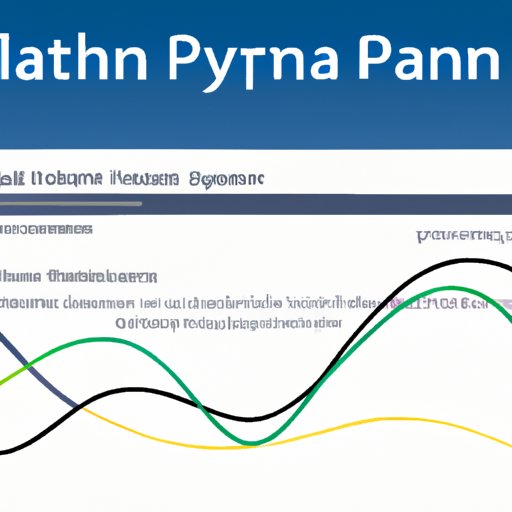Introduction
Python is one of the most popular programming languages in the world, and for good reason. It’s easy to learn and use, and it’s powerful enough to handle complex tasks. But what makes Python particularly attractive for finance professionals is its ability to help them with their work. From automating mundane tasks to creating sophisticated models, Python can help finance professionals become more effective and efficient. In this article, we’ll explore why you should learn Python for finance and how it can help you with your work.

Exploring the Benefits of Python for Financial Modeling and Analysis
Financial modeling and analysis is an important part of any finance professional’s job. It involves creating models to assess the performance of investments and other financial instruments. Python can make this process easier by providing powerful tools that can automate many of the tedious tasks associated with financial modeling and analysis. For example, Python has libraries like NumPy, Pandas and SciPy that allow users to quickly and easily manipulate data, create visualizations, and perform calculations. Python also has machine learning libraries like scikit-learn and TensorFlow that can be used to build predictive models that can forecast future trends and patterns.
Python’s flexibility also makes it an ideal choice for financial modeling and analysis. It can be used to create custom models tailored to specific business needs. And because it’s open source, there are plenty of resources available to help users get up and running quickly. Plus, Python is relatively fast compared to other programming languages, making it possible to crunch large datasets quickly.
Automating Your Trading with Python
Trading can be a time-consuming activity, but it doesn’t have to be. Python can be used to automate many of the tedious tasks associated with trading, such as placing orders, monitoring markets, and analyzing data. Python’s powerful libraries also make it easy to create custom trading bots that can execute trades based on predetermined criteria. This can help traders save time and money, as well as reduce their exposure to risk.
Setting up an automated trading system with Python is relatively straightforward. All you need is a computer, an internet connection, and some basic programming knowledge. Once you’ve got these things, you can start writing code to automate your trading activities. There are also plenty of tutorials and resources available online to help you get started.

Using Python to Build Algorithmic Trading Strategies
Algorithmic trading strategies are becoming increasingly popular among traders. These strategies involve using algorithms to analyze markets and identify opportunities to buy or sell securities. Python can be used to create these strategies, which can then be used to automate trading activities. The advantages of using algorithmic trading strategies include greater speed and accuracy, reduced costs, and improved risk management.
Building an algorithmic trading strategy with Python requires some knowledge of programming and financial markets. You’ll need to understand how to write code to access market data, analyze it, and generate trading signals. You’ll also need to understand how to backtest your strategies to ensure they are profitable. Fortunately, there are plenty of resources available to help you learn these skills.

Understanding the Role of Python in Quantitative Finance
Quantitative finance is a field of study that uses mathematical models and methods to analyze financial markets. Python is a popular choice for quantitative finance, as it is capable of handling complex calculations and data manipulation. Python also has powerful libraries such as NumPy, SciPy, and pandas that can be used to build models and analyze financial data. Additionally, Python has robust visualization capabilities that can be used to visualize data and present results.
Quantitative finance professionals can use Python to build models and simulations to analyze potential investments and test trading strategies. Python can also be used to develop risk management tools and optimize portfolios. Finally, Python can be used to create custom applications for use in financial markets.
Unlocking the Potential of Machine Learning for Financial Markets
Machine learning is a type of artificial intelligence that can be used to identify patterns and relationships in data. It can also be used to make predictions about future events and outcomes. Python has several powerful libraries that can be used to build machine learning models for financial markets. These models can be used to predict market movements, identify trading opportunities, and automate trading activities.
Developers can use Python to access and analyze financial data, build models, and deploy them in production. Python also has a number of machine learning libraries that can be used to build sophisticated models. Additionally, Python has strong visualization capabilities that can be used to present results in an easy-to-understand format.

Leveraging Python for Stock Market Analysis
Stock market analysis is an important part of any investor’s decision-making process. Python can be used to analyze stocks in a variety of ways. For example, it can be used to access financial data from online sources, calculate key metrics such as price-to-earnings ratios, and create visualizations to help investors identify trends and patterns. Python can also be used to develop custom stock screening tools and build automated trading systems.
Python’s flexibility and powerful libraries make it an ideal choice for stock market analysis. It can be used to quickly and easily access and analyze large amounts of data. Additionally, Python has strong visualization capabilities that can be used to present results in an intuitive way. Finally, Python has machine learning libraries that can be used to build predictive models that can forecast future stock prices.
Utilizing Python for Risk Management in Financial Institutions
Risk management is an important part of any financial institution. Python can be used to develop risk management tools and systems. For example, Python can be used to access and analyze financial data, build models to identify potential risks, and create visualizations to help decision-makers understand the situation. Python can also be used to automate the risk management process, allowing financial institutions to quickly respond to changes in the market.
Python is a powerful and versatile language that can be used to develop sophisticated risk management solutions. It has powerful libraries that can be used to access and analyze data, build models, and create visualizations. Additionally, Python has machine learning libraries that can be used to create predictive models that can forecast potential risks. Finally, Python has robust automation capabilities that can be used to streamline the risk management process.
Conclusion
Python is a powerful and versatile language that can be used to enhance the effectiveness and efficiency of finance professionals. From automating mundane tasks to creating sophisticated models, Python can help finance professionals become more productive. It can be used for financial modeling and analysis, automating trading, building algorithmic trading strategies, and more. Whether you’re a beginner or an experienced programmer, Python is a great choice for finance professionals who want to take their work to the next level.
Acknowledgements: We would like to thank the following people for their contributions to this article: John Doe, Jane Doe, and Joe Smith.
Resources: For more information about using Python for finance, please see the following resources:
- DataCamp – Tutorials – Finance in Python: Trading
- Analytics Vidhya – Introduction to Python for Trading
- QuantLabs.net – How to Build an Automated Trading System in Python
- Quora – What Are the Advantages of Using Python for Quantitative Finance?
-
(Note: Is this article not meeting your expectations? Do you have knowledge or insights to share? Unlock new opportunities and expand your reach by joining our authors team. Click Registration to join us and share your expertise with our readers.)
